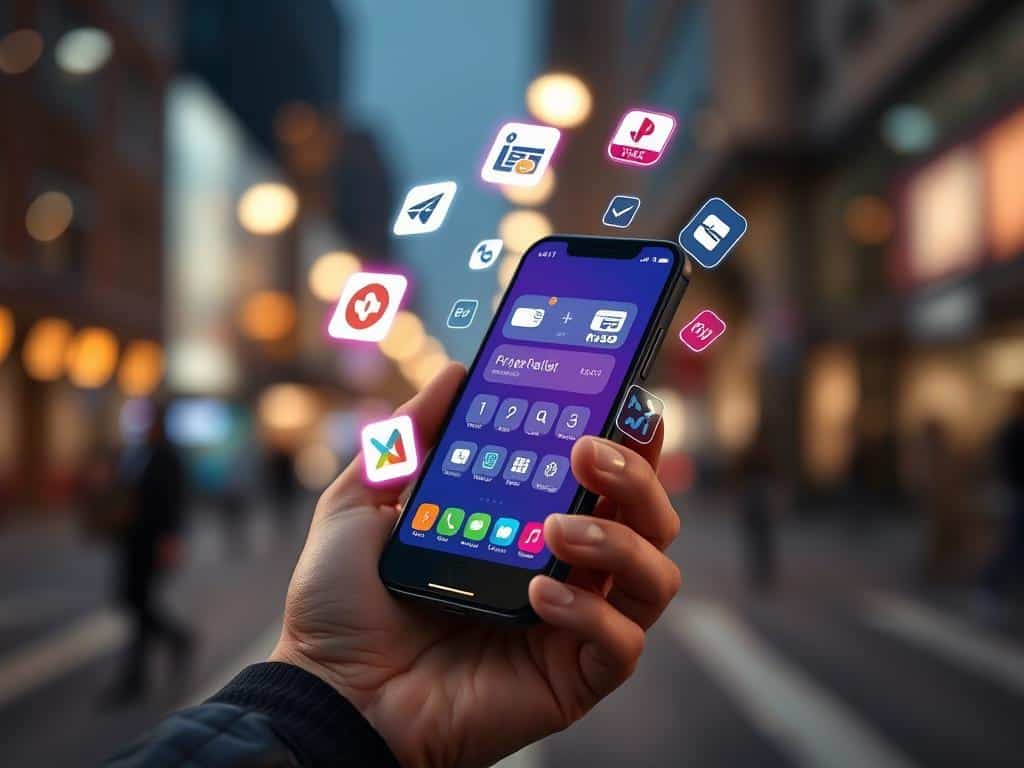Did you know that by 2023, Sweden might become the first cashless society in the world? This step is part of a bigger shift toward digital payments worldwide. This change has been sped up by the pandemic. Recently, there’s been a huge jump in people wanting to make payments without cash. In the USA, contactless payments more than doubled from 2019 to 2020. People like how easy and safe it is to pay digitally. In fact, 74% of people around the world say they’ll keep using these methods after the pandemic.
Thanks to new technology like mobile payment apps and e-wallets, the way we pay for things is changing fast. This article will look into how these changes affect our daily lives. It will also give insights into what we might see in the future of digital payments.
Key Takeaways
- Sweden is anticipated to become the first cashless society by 2023.
- The UK is predicted to follow suit by 2026, emphasizing a growing cashless trend.
- Tap and pay transaction volumes in the USA have risen dramatically since the onset of the pandemic.
- Over 74% of global consumers plan to continue using contactless payments in the post-pandemic era.
- Digital wallets are expected to compete with traditional contactless cards for the top payment method at points of sale.
The Rise of Digital Payments
The way we pay is changing fast, with more people using contactless payments worldwide. Digital payments are now common in the United States and Europe. It’s fascinating that 92% of Americans have used digital payments in the last year. This shows a big move towards easy and safe payment options.
Shift to Contactless Transactions
Many people like the ease of just tapping their cards or using mobile wallets. From 2019 to 2024, the use of digital wallets in stores is expected to jump from 19% to 28%. This means quicker checkouts. Over $10 trillion is spent annually in-store with digital payments. This benefits both shops and customers. Still, some worry about security. Yet, 69% trust their digital wallet providers, wanting safe transactions as tech improves.
Impact of Mobile Payment Apps
Mobile payment apps are making shopping better. More people are using apps for purchases, with a 60% usage rate in the U.S. This is an increase of 8% since 2019. Rewards and offers are important for brand loyalty. For about 25% of U.S. shoppers, earning points and discounts influences their choices. With digital currencies growing, it’ll be interesting to see how shopping habits change.
Digital Payments and E-Wallets
The use of e-wallets has changed how I handle my money and day-to-day spending. They offer a level of ease not seen before. Now, I can make safe payments without needing cash or cards on me. E-wallets are now a big part of daily life. They make financial services easy to get, especially for those who haven’t had them before. This change is slowly modifying how people access tools for managing their money.
Integration of E-Wallets in Everyday Transactions
I now often pay with e-wallets, like Google Wallet or Apple Pay, for my purchases. This can be in stores or online with just a quick tap on my phone. This not only makes things safer because of encrypted transactions but also lets me watch my spending in real time. With e-wallets, I can securely keep many ways to pay and not carry my physical wallet around. Also, being able to switch my crypto into spendable cash with Coinbase cards adds even more value. It makes using all my assets really flexible.
Adoption among Small Businesses
More small businesses are starting to use e-wallets as customers like me want to pay without cash. Places like local shops and eateries are now taking payments through apps like Cash App. This makes it easy for me to try new small businesses that go for digital payment options. These digital tools help owners cut down costs and get to more customers. By adopting e-wallets, small businesses can give better service to their customers and reach out to more people.

Conclusion
Thinking about the future of digital payments, it’s clear that moving away from cash is a big change. This change in how we pay and do business is huge. Innovations come from both the government and private companies. They highlight how crucial safe and easy-to-use payment systems are. For example, India’s “Aadhaar” and Brazil’s “Pix” show how nations use digital options to improve financial access.
Also, mobile payment platforms are becoming more popular. They change to meet what customers need. Now, people can pay easily using their devices. But, moving to digital payments means facing issues like online security threats. It also means following strict rules. So, everyone must stay alert.
Looking to the future, it’s very important for all of us to get on board with digital payment trends. If we focus on creating payment systems that are safe and work well, we can enjoy the good things a cashless world offers. This will keep us safe as things quickly change in digital finance. Being smart about these changes will decide the future of how we pay.